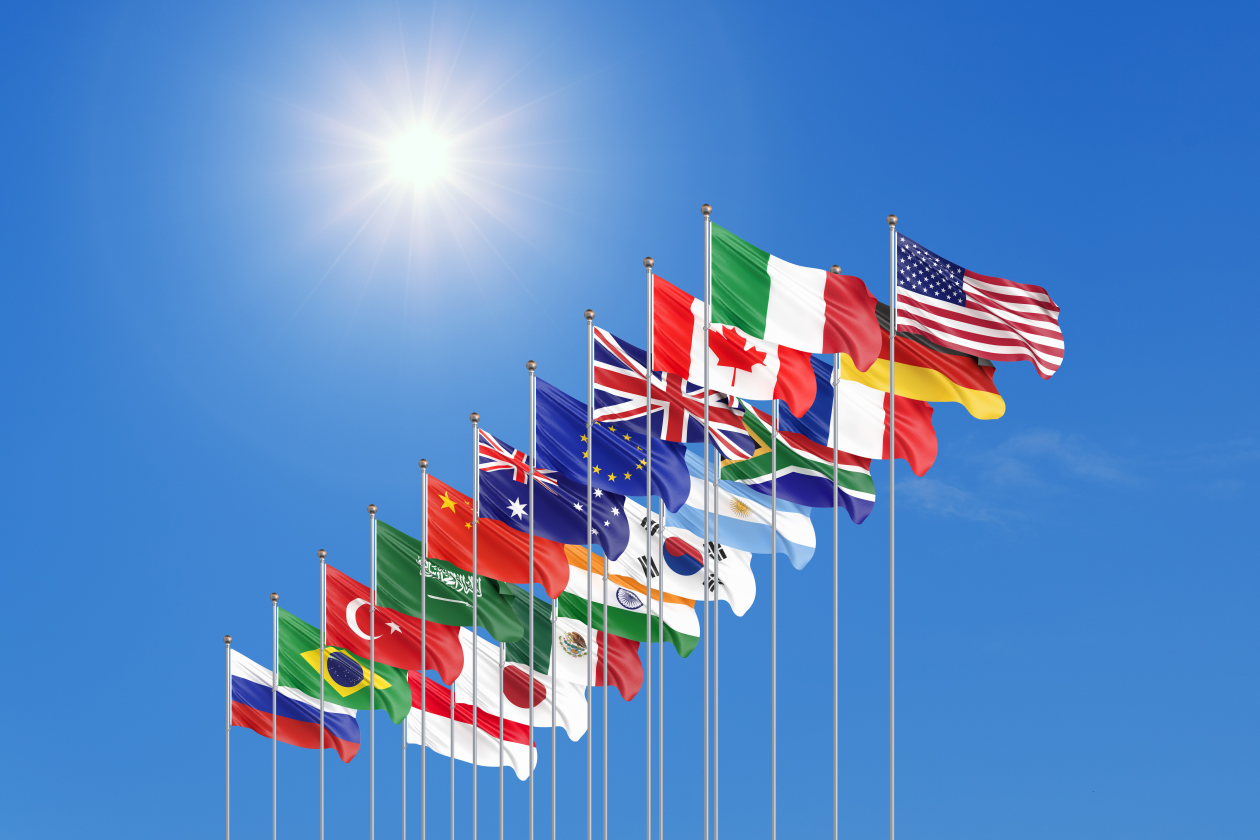The United Nations is made up of 193 member states. However, it’s the fate of the G20 – 19 nations plus the European Union – that drives the global economy.
They account for around two-thirds of the world’s population and around four-fifths of global economic activity.
Ahead of their annual summit, we’ve taken a look at the differing prospects for some of these main economies and markets – and the implications for investors.
This article isn’t personal advice. All investments can rise and fall in value, so you could get back less than you invest. If you’re not sure if an investment is right for you, ask for financial advice. Past performance isn’t a guide to the future.
US
The US is exceptional on many levels. It’s the biggest economy in the world, its growth has outpaced other advanced economies over the last two years, and it’s expected to do so again in 2025.
Its stock market is home to nine of the world's top 10 companies – many seen as the expected winners from the potential of artificial intelligence (AI). And it accounts for nearly two thirds of the value of global equity markets.
However, the market is also exceptionally expensive. And that means that investors will need to see the potential of AI realised in above-average earnings growth over the coming years.
The re-election of Donald Trump brings a new level of uncertainty.
In particular, we wait to see whether talked-about tariff hikes are fully implemented, and on who.
Japan
Japan tops the Economic Complexity index, which measures the number and complexity of export products.
This is reflected in the number of world class companies listed on the stock market.
The country offers great diversification benefits to investors because it’s at a different stage of its interest rate cycle.
We expect gradually increasing rates while most developed countries cut theirs.
India
India is the fastest growing economy in the G20 and we expect this growth premium to carry on for the next decade.
What’s more, growth is primarily driven by domestic demand, so the economy is less sensitive to the ups and downs of the global economy than China or the developed world.
However, these strengths are reflected in high equity market valuations.
China
The downturn in the residential property market continues to weigh on the country's prospects.
The government has announced various stimulus measures that should provide some boost to the economy. But these aren’t expected to solve the structural issues holding growth back.
Still, poor sentiment and valuations towards the bottom end of the historical range mean that any positive news could support the market.
European Union
The International Monetary Fund (IMF) forecast lacklustre growth of 1.2% for the Eurozone in 2025, albeit this is an improvement on the last two years.
The region’s producers of export goods, like cars, are more exposed to the growing competition from China, where the manufacturing industry is becoming more technologically advanced.
The European Union’s fiscal framework limits the scope for government spending to boost growth and this is one reason why we’re expecting lower interest rates in the future.
What’s next for commodity producers?
For the last 30 or 40 years, a building boom in China powered strong demand for commodities from Canada, Australia, South Africa, Argentina, Brazil, Mexico and Indonesia.

The slowdown in China removes this tailwind and any further slowdown could affect demand here.
However, it’s not all about China. We’re expecting to see pockets of demand for certain metals needed for the energy transition.
What about the UK?
How does the UK stack up against this eclectic mix?
Subdued growth, falling inflation, high debt levels, attractive valuations and a lack of world-beating technology companies makes the UK stock market look to us more like their European peers than the US.
But we see the economy as less vulnerable to the growing competition from China.
And it could be seen as an island of political stability over the next five years.
What does all this mean for investors?
All G20 economies are sensitive to global trends to differing degrees.
The backdrop is relatively slow economic growth, falling inflation, and high levels of government debt.
The whole world will feel the effects of a significant hike in US tariffs, if they’re implemented as set out in Donald Trump’s campaign speeches.
Still, these very different countries are exposed to a diverse range of risks.
For investors, risk and return are closely linked. Your portfolio can benefit by diversifying across these different drivers of returns – that way no matter what happens you’ll at least have something doing well in your portfolio, although there are no guarantees.
Later this week we’ll be covering 4 share ideas that could take advantage of the changing trends among the G20.
To make sure you don’t miss out on what they are, sign up to our weekly Share Insight email.











